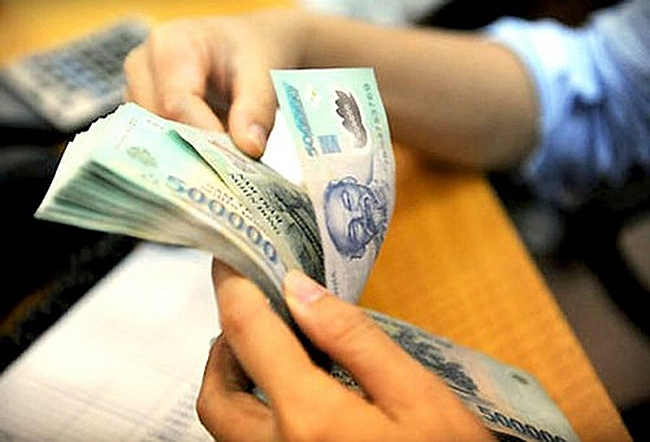Regional minimum wage may increase by 8 per cent in 2019
 |
| The National Salary Council once again sees great debates around the minimum wage increase |
On July 9, the National Salary Council organised a meeting to discuss increasing the regional minimum wages for 2019. During the meeting, two option streams for the wage were recommended, including an increase of 8 per cent and halt to increase the regional minimum wage.
Notably, the Vietnam General Confederation of Labour (VGCL) proposed increasing the regional minimum wage by 8 per cent, equalling VND220,000-330,000 ($9.55-14.32) per month, for 2019.
Vu Quang Tho, director of the Institute of Workers and Trade Unions, a member of VGCL, said that the offered figure is calculated based on price fluctuations, labour productivity growth, the difference between the minimum wage and the minimum living needs.
Tho added that according to the institution’s survey of 30,000 employees at 150 companies, the average wage increased during past years, especially in 2017. Besides, there are increases in the volume of employees who can save a part of their wages as well as employees whose wages meet their minimum living requirements.
| The minimum wage was officially increased from January 1, 2018 by an extra VND180,000-230,000 ($8.07-10.13), depending on the region. |
However, the volume of employees who have wages under their minimum living needs has yet to be improved. These are objects that the VGCL want to consider in its proposal to increase the minimum wage.
“The nation’s has been on a path of steady economic growth, while newly-established firms outnumber enterprises that are halting their operations. This is also included in the minimum wage proposal,” Tho stated.
Meanwhile, Hoang Quang Phong, vice president of the Vietnam Chamber of Commerce and Industry (VCCI), stated that almost all enterprise associations advise against increasing the minimum wage in 2019. Employers want to spend money on training employees in order to improve their skills before increasing their wages.
Responding to the opinion of the representative of VCCI, Tho stated that in case enterprises do not want to increase wages to offset the difference between the minimum wage and minimum living needs, enterprises at least have to increase the wages of a few employees to offset inflation fluctuations as well as pay for labour productivity growth with a total increase of 7 per cent.
Regarding the representative of the government, Doan Mau Diep, Deputy Minister of Labour, Invalids and Social Affairs, stated that according to Resolution No.27, by 2020 the regional minimum wage has to meet the minimum living needs of employees. At present, the minimum wage only meets 93 per cent of minimum living needs. The difference will be worked off in the next two years.
“Based on the demand for food as well as the increase of 8.4-14 per cent in the consumer price index by 2020, the authorities will have to calculate the minimum wage schedule in order to remove the difference between the minimum wage and minimum living needs,” Diep stated.
He added that the final increase will have to be a compromise between employers and employees.
According to the plan, VGCL and VCCI will once more meet to discuss rates before issuing the final proposal to submit to the government for approval.
In December 2017, the government has issued Decree No.141/2017/ND-CP, amending the regional minimum wage for workers employed under a labour contract. Accordingly, the minimum wage was officially increased from January 1, 2018 by an extra VND180,000-230,000 ($8.07-10.13), depending on the region.
What the stars mean:
★ Poor ★ ★ Promising ★★★ Good ★★★★ Very good ★★★★★ Exceptional
 Tag:
Tag:
Related Contents
Latest News
More News
- Vietnam eases policy approval requirements, simplifies foreign and outbound investments (December 11, 2025 | 17:53)
- Unpacking new momentum in Vietnam’s M&A market (December 10, 2025 | 09:59)
- Forum honours outstanding M&A deals, strategies, and advisory firms (December 09, 2025 | 18:22)
- Vietnam enters defining phase of M&A growth (December 09, 2025 | 17:00)
- Vietnam’s M&A market opens new opportunities amid strong economic momentum (December 09, 2025 | 15:00)
- Vietnam M&A Forum 2025: new position, new momentum (December 09, 2025 | 14:30)
- FDI in Vietnam jumps on additional capital and share purchases (December 09, 2025 | 13:56)
- VIR gathers dealmakers for M&A forum (December 08, 2025 | 17:17)
- Vietnam steps up green transformation with strong policies and rising investment demand (December 06, 2025 | 12:07)
- Listed companies honoured for information transparency (December 06, 2025 | 11:59)






























 Mobile Version
Mobile Version